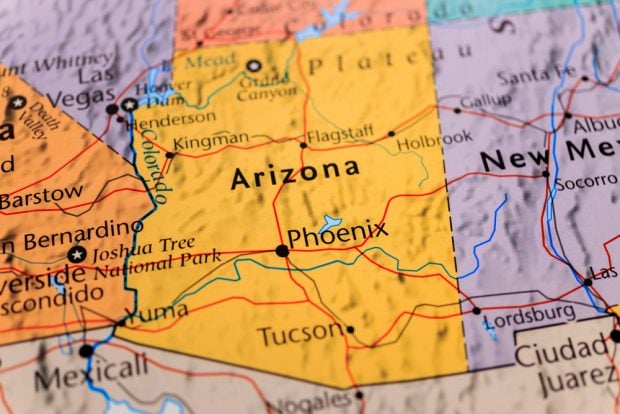RALEIGH, N.C. – When Local Government Federal Credit Union moves into its own building late next year or early the year after, it'll lose a landlord but not a close partner. The $534 million credit union has a staff of only 17 people, but utilizes the considerable technology and bricks-and-mortar infrastructure of $12 billion State Employees' Credit Union of North Carolina to deliver service to LGFCU's 124,000 members. That includes the more than 800 ATMs and 175 branches that SECU, the nation's second-largest credit union, maintains around the Tar Heel State. Internet banking, core processing and other essential services also are provided by SECU through a unique relationship going back to LGFCU's creation in 1983. LGFCU's creation as a federal charter was the result of a legal battle with the state's banks over state-chartered SECU's efforts to expand its field-of-membership to include local government employees. The state courts ultimately ruled for the banks and the smaller credit union was created. Ever since, the two CUs have been closely related. "The relationship with SECU is just that, a relationship," says Maurice Smith, president of LGFCU. "We do not refer to our partnership as an arrangement. Reason being, the two credit unions are similar in so many ways. We both serve government employees, we have similar attitudes on credit union issues, and our sponsors are interwoven tightly in everyday life." So is the technology. "The service to members is virtually seamless," Smith says. "SECU's platform has the capabilities of managing several institutions' account data simultaneously. LGFCU members can receive every service SECU members receive, with exceptions that apply due to being a federal charter." Those include federally chartered CUs' limits, for instance, on making secondary non-business home loans. Beyond the core functions such as call centers, branches and home banking, LGFCU has its own contractual relationships with vendors such as Visa, CUNA Mutual and Equifax through an interface with SECU's platforms. The arrangement lets LFGFCU function with a fraction of the staff normally found at a half-billion dollar CU. "Usually there is puzzlement when someone tries to draw a comparison between FTEs (Full-Time Equivalents) with ours," Smith says. "Many folks want to know how we do it. Once explained, the concept makes sense." LGFCU's 17 employees comprise "basically a management team" that includes finance, financial planning/counseling, marketing and policy/strategy making functions, the CU's president says, with the operational and front-line functions carried out by SECU. LGFCU also makes its home in one of SECU's administrative buildings, an arrangement expected to come to an end when the smaller CU moves into its own building in late 2005 or early 2006. Keeping the two credit unions separate in members' minds can sometimes be a problem, Smith concedes. "The challenges include making new members aware that there are two different financial institutions at play," he says. "Some mistakenly believe they are members of SECU because they visit SECU facilities for service. We try to have them think in terms of a supermarket. "While the store may display one name, the products on the shelves often differ." And so may the prices. "The rates may be different but the services are all the same as far as the consumer is concerned," says Jim Blaine, SECU president. "It's almost like we're Siamese twins. We're not just joined at the hip, but at the heart and brain. "It's been beneficial to a huge number of people in the 20 years that we've been doing this. Our credit unions are prospering, we're offering great credit union services for all government employees in North Carolina, and politically it makes us all much stronger. I can't think of anybody who loses when the consumer wins." Meanwhile, Smith says that while the relationship between LGFCU and SECU is perhaps unique "and exceptional in its scope, the underlying objectives are not exclusive. Across credit union land there are many examples of credit unions helping one another. Credit unions are not afraid of forging partnerships to provide helpful services to members." In fact, more such arrangements could stop the shrinking in the ranks of credit unions in general, one industry leader says. Bob Hoel, executive director of the Filene Research Institute, says the SECU-LGFCU relationship "demonstrates that credit unions can work together without merging" and enjoy mutual benefits. "Local Government FCU members obtain convenient access to great products and services," Hoel says, "while State Employees CU members receive the benefits of additional revenue to their credit union. Merging the credit unions was not necessary to achieve these benefits." It's also not the only such relationship for SECU. The big CU similarly accommodates the $15 million Latino Community Credit Union of nearby Durham and assists the $3 million North Carolina Press Association FCU. "It's really not a strain on our organization," says Blaine. "Adding one more member to the 1.5 million we already have between us is really not a problem." SECU charges the other credit unions 25% of their gross income for its services. "We're not in the business of subsidizing anyone," Blaine says. "But they more than pay their way." Incidentally, while the N.C. Supreme Court ruling that led to the creation of LGFCU said there was insufficient commonality between state and local government employees to allow them to belong to the same credit union, Smith, the LGFCU president, says, "It should be noted that that banks later filed suit against NCUA in federal court to challenge the charter of LGFCU. The court held that the banks did not have standing and dismissed the action." -
|Complete your profile to continue reading and get FREE access to CUTimes.com, part of your ALM digital membership.
Your access to unlimited CUTimes.com content isn’t changing.
Once you are an ALM digital member, you’ll receive:
- Critical CUTimes.com information including comprehensive product and service provider listings via the Marketplace Directory, CU Careers, resources from industry leaders, webcasts, and breaking news, analysis and more with our informative Newsletters.
- Exclusive discounts on ALM and CU Times events.
- Access to other award-winning ALM websites including Law.com and GlobeSt.com.
Already have an account? Sign In
© 2024 ALM Global, LLC, All Rights Reserved. Request academic re-use from www.copyright.com. All other uses, submit a request to [email protected]. For more information visit Asset & Logo Licensing.









